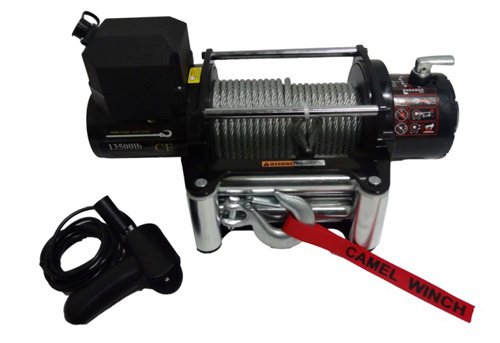Choosing a winch is arguably one of a 4WDer’s least favourite chores. You will spend money on a 4wd winch you rarely use. But, like many other products, it will be there when you need it, and when you want it to perform effectively. So, here are some crucial considerations to ponder before purchasing your first or future winch.
Types of Winches
When you think about it, a winch is a fundemental tool. It’s a motorised drum with a spool of rope. Electric variants are now the most frequent. They are simply connected to a vehicle’s battery.
Hydraulic winches are also available. These winches use fluid power to turn the drum of a winch. They either necessitate tapping into a vehicle’s hydraulic system or using dedicated hydraulic tanks.
Hand winches, such as a come-along, are also available. A come-along can be used for car recovery, however it is time-consuming. Electric and hydraulic winches, on the other hand, are faster.
In terms of speed, electric winches are typically the fastest of the three options discussed here. Hydraulic winches, on the other hand, may function continually without pausing. They are commonly used by tow truck operators. Nowadays, most recreational 4WD vehicles use electric winches.
What Factors Should You Consider When Purchasing a Winch?
When selecting a winch for your car, there are a few crucial factors to consider:
Winch Cost
An evident consideration in every purchasing choice. You obtain what you pay for, like with most other things. While a low-cost winch may appear appealing, remember that you will be using it in potentially hazardous conditions, so you should avoid low-quality winches at all costs. This does not, however, imply that you need to spend thousands of dollars on a winch. There are several variations, with the most costing between $300 and $1500.
Unfortunately, both $300 and $1500 winch makers will claim to be the greatest on the market, with catchy names that will attempt to convince you they can pull an 18-wheeler. Personal experience has shown that winches priced between $300 and $1500 will operate admirably.
Winch Pull Capacity
Because this is the primary function of the winch, it is critical that the winch you purchase is capable of pulling you out when you become trapped. In other words, it’s critical to determine if the winch is powerful enough (has adequate pull capacity) to draw the weight of your car. Winch capacity is commonly given in pounds or kilograms. The winch’s pull capability should preferably surpass the GVWR.
However, consider the weight of the extra accessories and equipment you’ll transport when travelling. Bull bars, hydration tanks, roof racks, and ski and snowboard equipment may all be hefty and add to the total weight of the vehicle. As a result, most experienced off-roaders recommend purchasing a winch with a pull capability double the weight of your vehicle’s gross rating.
Construction and electronics
After purchase, it is more challenging to modify the design than the winch cable. More expensive winches often have better electronics, improved weather sealing, and high tensile materials, making them better, more reliable, and more efficient. Expensive winches share the same 6.6 horsepower engine, 3-stage planetary gearing, and lifetime structural guarantee.
The heat generated by certain inductive brakes is reduced by 66%, making it perfect for synthetic winch lines. Instead of the spool sluggishly coming to a halt after you release the controls, this braking technique enables even more precise winching. An improved waterproofing feature and a cordless remote control are other variations between some variants.
Conclusion
Make sure to acquire the greatest electric winch you can afford if you’re buying one for your 4WD adventure vehicle.
Before going out there, make sure you are familiar with how to utilise your winch. Investing in a good 4wd winch might be the difference between sharing humorous trail stories with your friends over the campfire and getting lost overnight and needing extensive, potentially expensive help.
